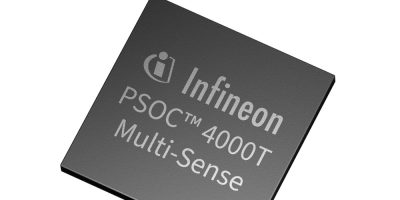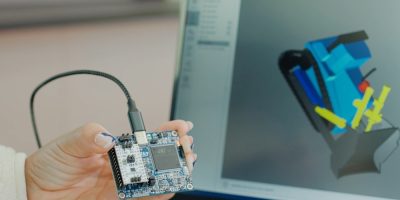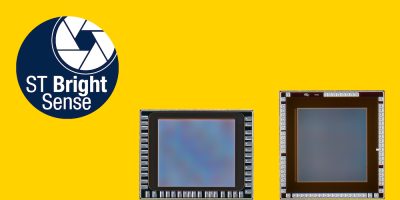Infineon has expanded its capacitive sensing technology CAPSENSE with a new, proprietary inductive sensing technology, as well as a non-invasive and non-contact liquid sensing solution. With PSOC 4, developers now have endless possibilities to develop new HMI and sensing solutions. From sleek metallic product designs with touch on metal buttons, to waterproof touch buttons, and innovative ways of sensing liquids, PSOC 4 Multi-Sense unlocks new possibilities of sensing.
Infineon’s PSOC 4000T is the first device to feature the company’s fifth-generation CAPSENSE and Multi-Sense. The supported sensing technologies can be combined in a single PSOC 4 MCU to optimise performance (e.g., combination of capacitive and inductive sensing), enable new use cases (e.g., underwater inductive sensing buttons) or realize cost savings (e.g., system control plus liquid sensing). In addition, Infineon’s fifth generation CAPSENSE with “Always On” technology enables sensing at 10x lower power consumption and offers a 10x higher signal-to-noise ratio than previous devices.
Infineon’s new Multi-Sense capabilities in the PSOC 4 family include:
Inductive sensing – Based on a new and proprietary methodology which is less sensitive to noise and more robust than current state of the art approaches that suffer from external noise as well as manufacturability concerns. Infineon’s inductive sensing technology enables new HMI use cases, such as touch-over-metal, force touch surfaces and proximity sensing. It is highly complementary to capacitive sensing and enables modern, metal-based and waterproof designs with sleek form factors such as metal touch buttons on refrigerators or robust HMI for underwater devices such as cameras and wearables.
Liquid sensing – Non-invasive and non-contact liquid sensing capability with AI/ML based processing algorithm in PSOC 4 enables more cost-effective and accurate sensing than mechanical sensors and typical capacitive solutions. It is resistant to environmental factors such as temperature and humidity and can detect liquid levels with up to 10-bit resolution in various shapes of containers. The solution offers even more features that other liquid sensors cannot solve such as foam rejection, residue rejection and reliably work with varying air gaps between sensor and container. Liquid sensing on PSOC 4 brings more intelligence to applications managing liquids such as robot vacuum cleaner, soap dispensing in washing machine, coffee machines, humidifiers, etc.
CAPSENSE hover touch – Hover touch sensing supports new use cases where a direct touch of a button is not required. Hover touch can eliminate multiple components in certain applications such as springs and gaskets in cooktop touch panels. By bridging the airgap with hover touch, customers achieve significant bill-of-material (BOM) savings, while realising increased system performance, reduced design complexity, and faster time-to-market.
Infineon’s PSOC 4000T with fifth-generation CAPSENSE and new Multi-Sense capability is available now. A second device, the new PSOC 4100T Plus with higher memory and more I/Os, will be Multi-Sense-enabled in the second quarter of 2025, and all subsequent PSOC devices with CAPSENSE will incorporate this technology. The new PSOC 4000T series provides an upgrade path for PSOC 4000, PSOC 4000S and PSOC T 4700S based designs to fifth-generation HMI technology with software and package compatibility.







